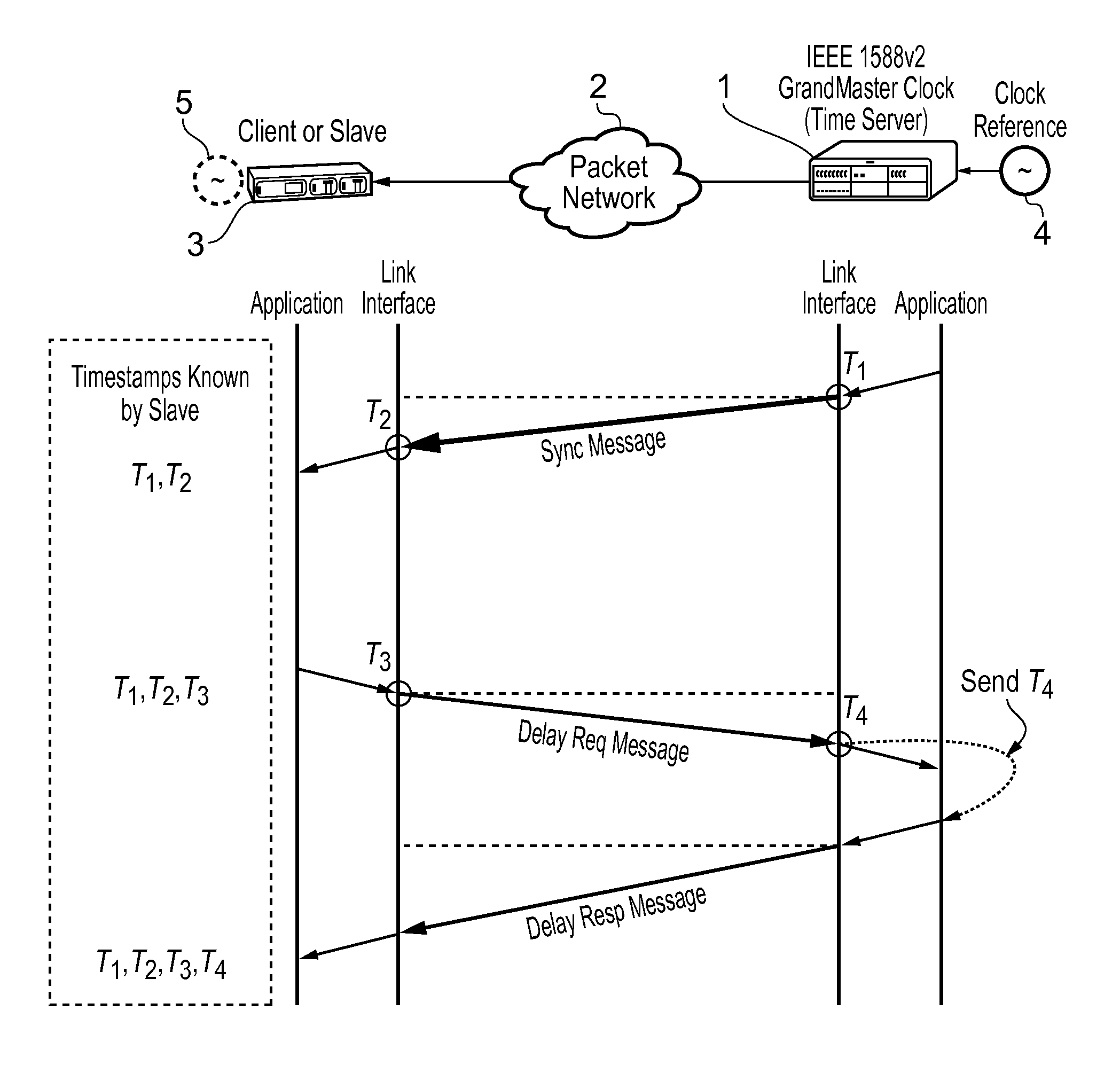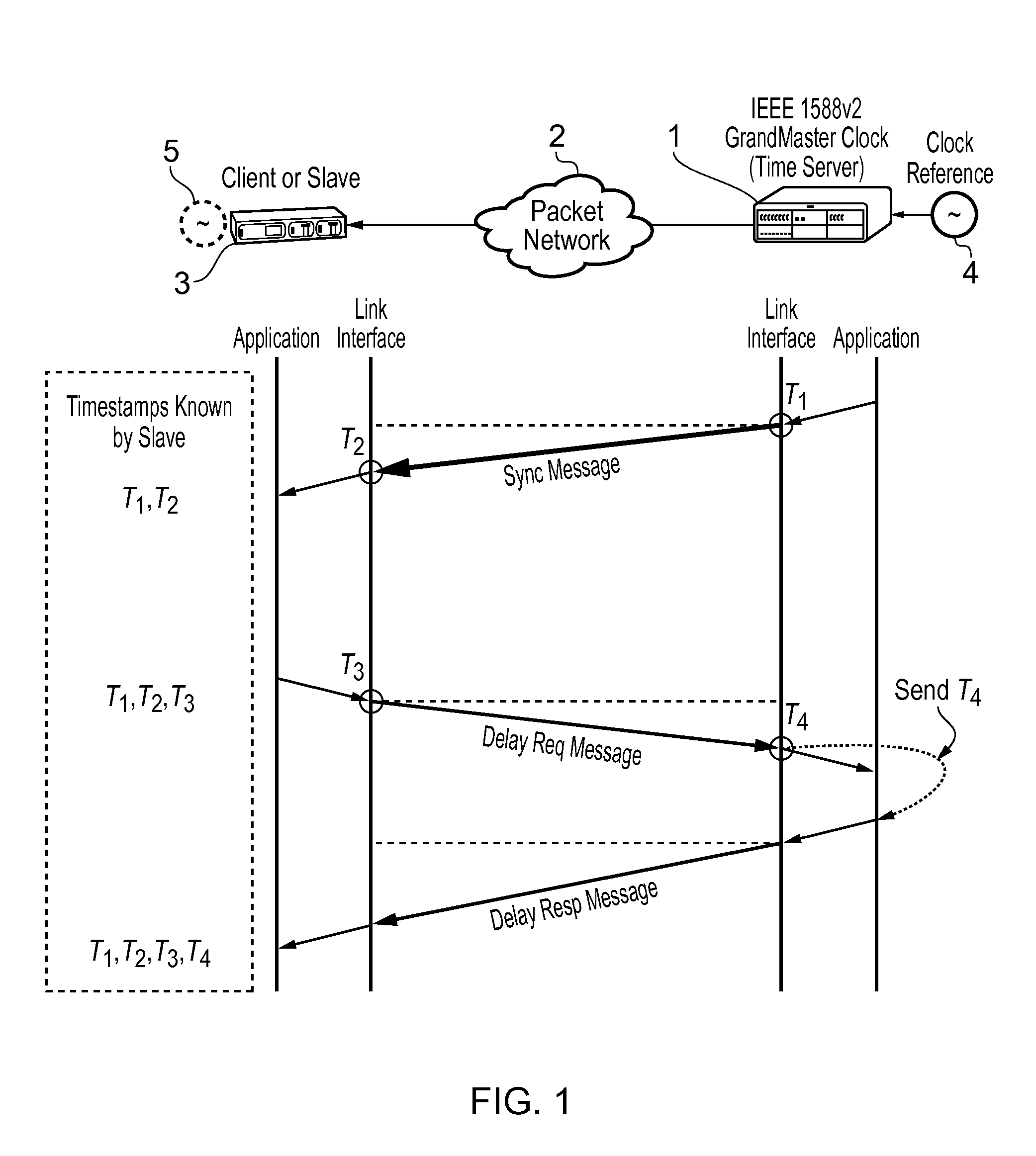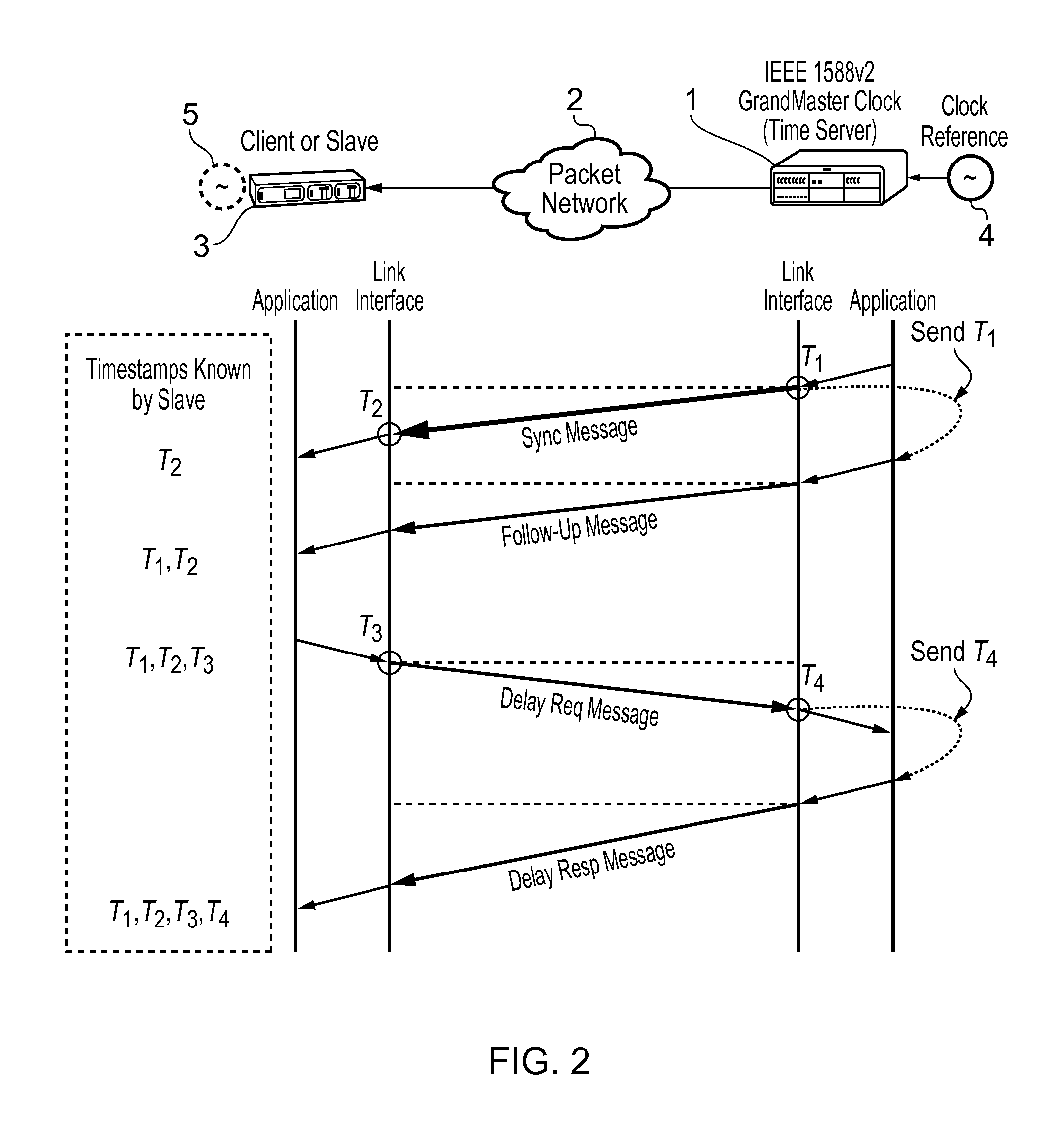Method and devices for packet selection
a packet selection and packet technology, applied in the field of packet selection techniques, can solve the problems of poor clock quality, high clock noise, and inability to use clocks for the end system
- Summary
- Abstract
- Description
- Claims
- Application Information
AI Technical Summary
Benefits of technology
Problems solved by technology
Method used
Image
Examples
first embodiment
[0138]The packet selection algorithm according to the present invention, which will be called the “Mean of Inter-Arrival Times (MNIAT)”, is based on the running mean of ΔR(n). To estimate the running mean of the underlying distribution, we use the simple Exponentially Weighted Moving Average (EWMA) filter,
M(n)=α·ΔR(n)+(1−α)·M(n−1), 0<α<1 (10)
where α is the forgetting factor and M(n) is the mean estimate for nth time instant (or measurement window). The MNIAT algorithm minimizes the PDV by using the mean estimator M(n).
second embodiment
[0139]The packet selection algorithm according to the present invention, which will be called the “Median of Inter-Arrival Times (MDIAT)”, is based on the median of ΔR values in a sampling window. We evaluate the Median of the underlying distribution as follows:
{Sl}=sort⌊ΔR(k)⌋,n-L+1≤k≤n;1≤l≤L(11)M(n)={S(L+1) / 2,Lodd12·(SL / 2+S1+L / 2),Leven(12)
where L is the window length of ΔR values. The MDIAT algorithm minimizes the PDV by using the above median estimator.
[0140]Using either the MNIAT or MDIAT algorithms, the packet selection function g(xk) (see box 12 in FIG. 7), is then defined as follows:
xopt=argk(xk)=g(xk)=min{xk-M(n)},n-L+1≤k≤n(13)
where xopt is the ΔR value of the selected packet, n is the discrete sampling time instant, L is the window size of ΔR samples, and xk is the k-th element in the packet selection window.
Measures of Central Tendency
[0141]A measure of central tendency is a single value that attempts to describe a set of data by identifying the central position within tha...
third embodiment
[0146]The packet selection function according to the present invention, which will be called “Equalizing Inter-Departure and Inter-Arrival Times (EDAT)”, minimizes the effects of PDV by selecting timing messages such so that
e(n)=ΔR(n)−ΔT(n)=0 (16)
[0147]The best packet here is the one that minimizes the error variable as it minimizes the PDV as well. This is done by selecting the packet within a window of packets with difference between inter-arrival time and inter-departure time closest to the zero (ΔR(n)≈ΔT(n)) as this is the packet experiencing minimal PDV. These packets would thus best preserve the constant timing signal spacing at the transmitter.
[0148]The MNIAT, MDIAT and EDAT algorithms, which all share the same underlying idea, all allow for selecting the packet that minimizes the PDV. In the MNIAT, MDIAT and EDAT algorithms, the timestamps associated with the optimal packet in a window are captured then used in the slave clock recovery mechanism. A key advantage of using th...
PUM
 Login to View More
Login to View More Abstract
Description
Claims
Application Information
 Login to View More
Login to View More - R&D
- Intellectual Property
- Life Sciences
- Materials
- Tech Scout
- Unparalleled Data Quality
- Higher Quality Content
- 60% Fewer Hallucinations
Browse by: Latest US Patents, China's latest patents, Technical Efficacy Thesaurus, Application Domain, Technology Topic, Popular Technical Reports.
© 2025 PatSnap. All rights reserved.Legal|Privacy policy|Modern Slavery Act Transparency Statement|Sitemap|About US| Contact US: help@patsnap.com



